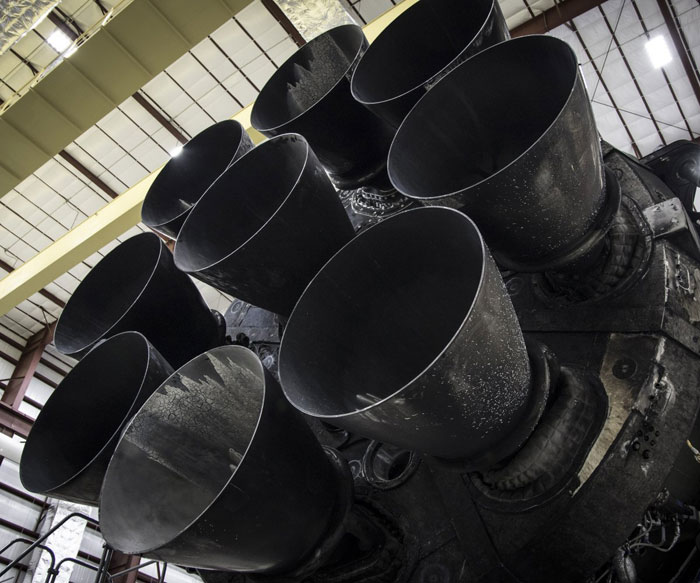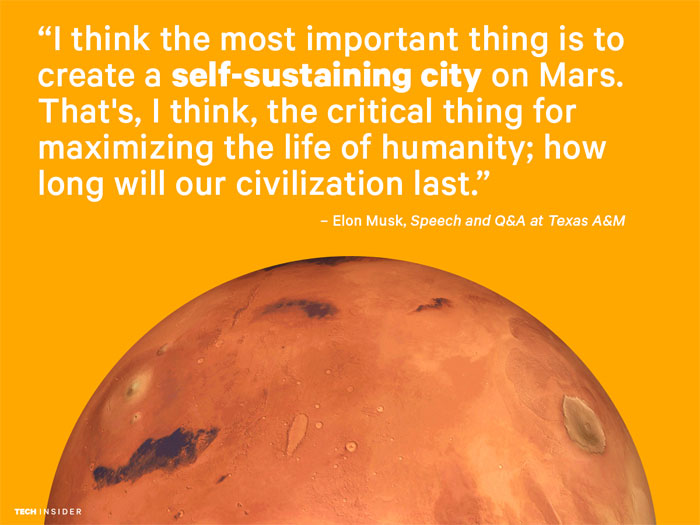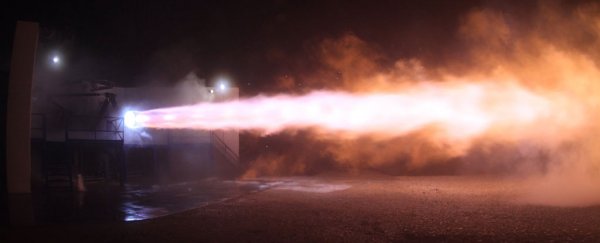Tech billionaire Elon Musk is convinced that we must colonise Mars with a million people if the humanity is to survive long-term. To that effect in 2008, he almost went broke funding SpaceX – his then-new aerospace company – to keep developing next-generation rockets.
And on Tuesday, at a challenging moment in the 14-year-old company's history, Musk plans to unveil his grand vision: to turn Mars into a "backup drive" and save humanity.
The big announcement is scheduled for Tuesday, September 27 at 2:30pm EDT during the 67th International Astronautical Congress (IAC) in Guadalajara, Mexico. (Watch it live at the end of this post.)
But ahead of that highly anticipated speech, on Twitter early on Monday morning, Musk shared the first photo of his "Interplanetary Transport System" (ITS) – a powerful rocket engine dubbed Raptor:
SpaceX propulsion just achieved first firing of the Raptor interplanetary transport engine pic.twitter.com/vRleyJvBkx
— Elon Musk (@elonmusk) September 26, 2016
A rocket engine to get to Mars
This isn't the first the world has heard about the Raptor engine, but it's allegedly the first test-firing of the device – and definitely the first photo we've seen of it.
The image shows a static fire test, which is when a cone-shaped rocket engine is hooked up to a fuel source, ignited, and pushed to the limits to measure its performance.
The Raptor's fuel is almost certainly methane burned with liquid oxygen, based on SpaceX's previous intimations about its Mars rocket system, previously called the Mars Colonial Transporter (MCT) – and before that a self-descriptive "Big F**ing Rocket" (BFR).
Musk shared a few of the Raptor's test-firing details on Monday morning as well, including a beautiful image. "Production Raptor goal is specific impulse of 382 seconds and thrust of 3 MN (~310 metric tonnes) at 300 bar," Musk wrote on Twitter.
Mach diamonds pic.twitter.com/TCX7ZGFnN0
— Elon Musk (@elonmusk) September 26, 2016
How does that compare to the Merlin engines used to power SpaceX's signature Falcon 9 rocket – the one it used to deliver supplies to the International Space Station?
"Chamber pressure is almost 3X Merlin, so engine is about the same size for a given area ratio," Musk wrote on Twitter.
This means the Raptor, which can spit out about 675,000 pounds (306,175 kilograms) of thrust, is roughly three times more powerful than the Falcon 9's Merlin engines, each of which can push with a force of about 200,000 pounds (90,718 kilograms).
The Falcon 9 uses nine Merlin engines in its recoverable booster and one in its upper stage:
 The bottom of a Falcon 9 rocket, showing its 9 Merlin engines. Credit: SpaceX/Flickr
The bottom of a Falcon 9 rocket, showing its 9 Merlin engines. Credit: SpaceX/Flickr
So presumably, SpaceX engineers will be attaching a cluster of Raptor engines to the bottom of a very big and yet-to-be-announced multi-stage rocket.
What about the rocket?
 Skye Gould/Tech Insider
Skye Gould/Tech Insider
Beyond that, the world knows next to nothing else about the BFR, MCT, ITS, or whatever Musk decides to call it next.
What we do know is that it must be very big, very powerful, and lean on SpaceX's prior history of rocket development.
Musk has admitted that permanently colonising Mars and saving humanity is a long-term goal.
He'd first like to land one of his upcoming Red Dragon spacecraft on Mars sometime in 2018:
Planning to send Dragon to Mars as soon as 2018. Red Dragons will inform overall Mars architecture, details to come pic.twitter.com/u4nbVUNCpA
— SpaceX (@SpaceX) April 27, 2016
That timeline may be more difficult to achieve now, though.
Following a recent launchpad explosion of a Falcon 9 rocket, presumably caused by a faulty helium tank – a failure Musk has dubbed "the most difficult and complex" in SpaceX's history – the company now faces launch delays for $10 billion worth of business, plus the first launch of its significantly more powerful Falcon Heavy rocket. (Which will precede a Mars mission.)
SpaceX will reveal all during a live video feed on Tuesday, Sept. 27 at 2:30 p.m. EDT. According to an event description on the IAC's site:
"[D]uring a special keynote entitled "Making Humans a Multiplanetary Species", Musk will discuss the long-term technical challenges that need to be solved to support the creation of a permanent, self-sustaining human presence on Mars.
The technical presentation will focus on potential architectures for colonising the Red Planet that industry, government and the scientific community can collaborate on in the years ahead."
When the time comes, you can watch SpaceX's livestream below, or by clicking over to YouTube.

This article was originally published by Business Insider.
More from Business Insider:
